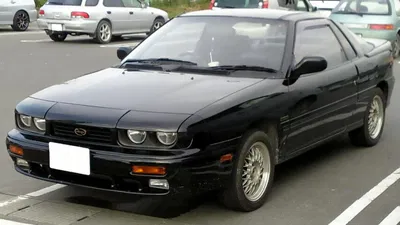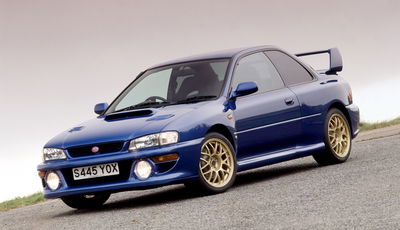Isuzu's Forgotten Turbo Coupe Was The Right Car At The Wrong Time

Isuzu is best-known in Europe for its pickups and trucks, but once upon a time, the company tried to build a sports coupe to rival the best.
It started with the old 117 Coupe, which was rapidly being outclassed and outgunned by the competition. Isuzu tapped the mind and pencil of a certain Giorgetto Giugiaro to design a replacement; a replacement that arrived as a concept in 1979 and was given what might just be the best pre-production car name in history: the Ace of Clubs.
It was quickly punted into production for Japan in 1980, with minimal changes, after the media and magazine-reading public went nuts over it. Renamed the Impulse for its North American debut in 1983 and the Piazza everywhere else, it was the first Isuzu passenger car to sell in any real numbers in the UK.
All was not as good as it looked, though. Its chassis was a recycled General Motors T-Body item similar to the one beneath the already old Chevrolet Chevette. Its live-axle setup meant the Piazza/Impulse couldn’t cash the cheques that its Italian style had written.
Its engines were good enough by most standards. The entry-option with 118bhp was a carry-over from the 117, but there was a sweet 133bhp with dual overhead camshafts (gasp) and either a decent five-cog manual gearbox or a relaxed four-speed automatic. But the game was advancing quickly and the public wanted more. The Piazza Turbo was born.

Carrying a mere 5bhp power boost over the DOHC engine it replaced, it made up for that with a hefty 43lb ft torque upgrade, and it peaked much lower down the rev range. The Turbo felt way faster than the older cars did. Different emissions rules allowed a freer-breathing exhaust in the UK - and a healthy 147bhp. After an initial batch of low-end cars that got a kicking in the automotive press, the UK only got a Lotus-tweaked version of the Turbo.
Lotus was owned by General Motors at the time. GM, which had a controlling interest in Isuzu as well, plumbed the British sports car brand’s talent pool to develop a kit of upgrades to finally set the Piazza straight. The results gave certain models softer springs but stiffer dampers and new anti-roll bars, so the car finally drove more or less like buyers wanted it to. By that time, though, its fate in Europe was already sealed by the arrival of something better.
Hot hatchbacks had landed, with Volkswagen’s Golf GTI making waves since the 1970s and the Peugeot 205 GTi following in 1984. They were more fun than the Piazza, easier to live with and keyed into a trend that people really got. This side of the Atlantic the Piazza was all but forgotten by the late 1980s.
Back in America the Impulse soldiered on. Modest upgrades carried it through the late 1980s until a second-generation car arrived. Again based on a General Motors platform, it switched to front-wheel drive with all-wheel drive as an option. It turned out to be a smart-looking thing, kind of reminiscent of a Mitsubishi Galant if you squint.

By now Isuzu was hitting the right notes. All Impulses were Lotus-tuned, they had passive rear-wheel steering and front-wheel drive versions weighed less than a small cat. It was too late, though. The marketing leviathans of Nissan, Toyota and others were winning hearts, minds and wallets. Isuzu didn’t have the budget to compete, no matter how good the product had become, and reports suggest the Impulse was an expensive choice at the time anyway.
By 1993 a lack of sales had signed the car’s early death warrant all over the world. What might have been if only the car had arrived five years sooner and been properly sorted at the first time of asking, we’ll never know.













Comments
I saw this and thought it was an 1985 Toyota Corolla levin ae86
Why did no-one tag me in this? It’s one of my all-time favourites - when I was in high school I set about designing a successor to this (before I discovered the Impulse 2nd gen) and it looked exactly like a 3rd gen Camaro. And that’s how I fell in love with Camaros.
What were we talking about again?
Pagination